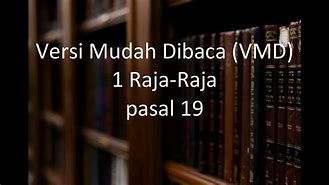
The origin of the term
The term Baroque probably ultimately derived from the Italian word barocco, which philosophers used during the Middle Ages to describe an obstacle in schematic logic. Subsequently the word came to denote any contorted idea or involuted process of thought. Another possible source is the Portuguese word barroco (Spanish barrueco), used to describe an irregular or imperfectly shaped pearl, and this usage still survives in the jeweler’s term baroque pearl.
In art criticism the word Baroque came to be used to describe anything irregular, bizarre, or otherwise departing from established rules and proportions. This biased view of 17th-century art styles was held with few modifications by critics from Johann Winckelmann to John Ruskin and Jacob Burckhardt, and until the late 19th century the term always carried the implication of odd, grotesque, exaggerated, and overdecorated. It was only with Heinrich Wölfflin’s pioneer study Renaissance und Barock (1888) that the term Baroque was used as a stylistic designation rather than as a term of thinly veiled abuse, and a systematic formulation of the characteristics of Baroque style was achieved.
Postmodern appreciation and reinterpretations
, New York, with a top broken
, reminiscent of those found in Baroque
tops that are reminiscent of urns that decorate corners, tops and roof railings of buildings and furniture from the reign of
Urns that decorate the roof railing of the Marble Court of the
, Versailles, France, by
, sold at Kartell Milano (Via Carlo Porta no. 1),
Church candlestick, 1681, silver, Museum of the
, inspired by Dutch 16th and 17th century canal houses, by
no. 120, Amsterdam, unknown architect,
Box, part of the Le Jardin de Versace collection, with complex
that are reminiscent of the Baroque ones from the 17th and very early 18th centuries, but also similar to the ones from the reign of Napoleon; designed by
; unknown date; porcelain; unknown dimensions or location
Baroque rinceaux with
, Paris, unknown architect, sculptor and painter,
Baroque rinceaux on an
of tortoiseshell on a brass background,
rinceaux on a vase, by the
, 1814, hard-paste porcelain with platinum background and gilt bronze mounts,
Appreciation for the Baroque reappeared with the rise of Postmodernism, a movement that questioned Modernism (the status quo after WW2), and which promoted the inclusion of elements of historic styles in new designs, and appreciation for the pre-Modernist past. Specific references to Baroque are rare, since Postmodernism often included highly simplified elements that were 'quotations' of Classicism in general, like pediments or columns.
More references to Baroque are found in Versace ceramic ware and fashion, decorated with maximalist acanthus rinceaux, very similar to the ones found in Italian Baroque ornament plates and in Boulle work, but also similar to the ones found on Empire objects, especially textiles, from the reign of Napoleon I.
LinkedIn and 3rd parties use essential and non-essential cookies to provide, secure, analyze and improve our Services, and to show you relevant ads (including professional and job ads) on and off LinkedIn. Learn more in our Cookie Policy.
Select Accept to consent or Reject to decline non-essential cookies for this use. You can update your choices at any time in your settings.
Table of Contents Ask the Chatbot a Question
Baroque architecture, architectural style originating in late 16th-century Italy and lasting in some regions, notably Germany and colonial South America, until the 18th century. It had its origins in the Counter-Reformation, when the Catholic Church launched an overtly emotional and sensory appeal to the faithful through art and architecture. Complex architectural plan shapes, often based on the oval, and the dynamic opposition and interpenetration of spaces were favoured to heighten the feeling of motion and sensuality. Other characteristic qualities include grandeur, drama and contrast (especially in lighting), curvaceousness, and an often dizzying array of rich surface treatments, twisting elements, and gilded statuary. Architects unabashedly applied bright colours and illusory, vividly painted ceilings. Outstanding practitioners in Italy included Gian Lorenzo Bernini, Carlo Maderno, Francesco Borromini, and Guarino Guarini. Classical elements subdued Baroque architecture in France. In central Europe, the Baroque arrived late but flourished in the works of such architects as the Austrian Johann Bernhard Fischer von Erlach. Its impact in Britain can be seen in the works of Christopher Wren. The late Baroque style is often referred to as Rococo or, in Spain and Spanish America, as Churrigueresque.
An intro to the Baroque period
Our Baroque definition is going to cover the traditional movement, as well as mention the more modern meanings associated with the word.
The Baroque is an art style that was dominant in Europe during the 16th and 17th century. It could be found in painting, architecture, sculpture, music, and other art forms. Baroque era art works emphasized movement, contrast, and detail, often seen in religious works which made up the period. Baroque (the word) is also used to refer to things as “grotesque,” “extravagant,” or “flamboyant.” The combination of the art period and this somewhat informal definition is what leads to theories of Baroque cinema.
Three main tendencies of the era
Three broader cultural and intellectual tendencies had a profound impact on Baroque art as well as Baroque music. The first of these was the emergence of the Counter-Reformation and the expansion of its domain, both territorially and intellectually. By the last decades of the 16th century the refined, courtly style known as Mannerism had ceased to be an effective means of expression, and its inadequacy for religious art was being increasingly felt in artistic circles. To counter the inroads made by the Reformation, the Roman Catholic Church after the Council of Trent (1545–63) adopted a propagandistic stance in which art was to serve as a means of extending and stimulating the public’s faith in the church. To this end the church adopted a conscious artistic program whose art products would make an overtly emotional and sensory appeal to the faithful. The Baroque style that evolved from this program was paradoxically both sensuous and spiritual; while a naturalistic treatment rendered the religious image more accessible to the average churchgoer, dramatic and illusory effects were used to stimulate piety and devotion and convey an impression of the splendour of the divine. Baroque church ceilings thus dissolved in painted scenes that presented vivid views of the infinite to the observer and directed the senses toward heavenly concerns.
The second tendency was the consolidation of absolute monarchies, accompanied by a simultaneous crystallization of a prominent and powerful middle class, which now came to play a role in art patronage. Baroque palaces were built on an expanded and monumental scale in order to display the power and grandeur of the centralized state, a phenomenon best displayed in the royal palace and gardens at Versailles. Yet at the same time the development of a picture market for the middle class and its taste for realism may be seen in the works of the brothers Le Nain and Georges de La Tour in France and in the varied schools of 17th-century Dutch painting. (For a detailed discussion of this phenomenon, see Rembrandt van Rijn.)
The third tendency was a new interest in nature and a general broadening of human intellectual horizons, spurred by developments in science and by explorations of the globe. These simultaneously produced a new sense both of human insignificance (particularly abetted by the Copernican displacement of the Earth from the centre of the universe) and of the unsuspected complexity and infinitude of the natural world. The development of 17th-century landscape painting, in which humans are frequently portrayed as minute figures in a vast natural setting, is indicative of this changing awareness of the human condition.
Revivals and influence through eclecticism
; unknown dimensions;
Large console with central projection; by
; 1850–1875; gilt wood and marble; 100 x 283 x 77 cm;
The Grand Salon of the apartments of the minister of state, currently known as the Napoleon III Apartments, designed by
and decorated with paintings by
1860; unknown materials; unknown dimensions;
Candelabrum with eleven lights; by
; 1861; gilt bronze; height: 83.7 cm, length: 49.4 cm; Napoleon III Apartments
, Paris, an example of
Grand foyer of the Palais Garnier, inspired by the
, but with some ornaments taken from other historical styles, like the
column lower parts, or the
lyres at the tops of windows, by
Table; 2nd half of the 19th century; Boulle marquetry; unknown dimensions; in a temporary exhibition called "Dress Code Parfum de Secol XIX" at the
, Paris, an example of Beaux Arts architecture, with Ionic columns very similar to those of the reign of
no. 2, Paris, with a facade made up from a mix of detailed stone elements and big simple brick surfaces like what is in
Door of Rue Guynemer no. 2, Paris, with
, garlands, proportions and other elements seen on wrought iron, furniture, textiles and ceramics from the reign of Louis XIV
Highly criticized, the Baroque would later be a source of inspiration for artists, architects and designers during the 19th century through Romanticism, a movement that developed in the 18th century and that reached its peak in the 19th. It was characterized by its emphasis on emotion and individualism, as well as glorification of the past and nature, preferring the medieval to the classical. A mix of literary, religious, and political factors prompted late-18th and 19th century British architects and designers to look back to the Middle Ages for inspiration. Romanticism is the reason the 19th century is best known as the century of revivals.[175] In France, Romanticism was not the key factor that led to the revival of Gothic architecture and design. Vandalism of monuments and buildings associated with the Ancien Régime (Old Regime) happened during the French Revolution. Because of this an archaeologist, Alexandre Lenoir, was appointed curator of the Petits-Augustins depot, where sculptures, statues and tombs removed from churches, abbeys and convents had been transported. He organized the Museum of French Monuments (1795–1816), and was the first to bring back the taste for the art of the Middle Ages, which progressed slowly to flourish a quarter of a century later.[176]
This taste and revival of medieval art led to the revival of other periods, including the Baroque and Rococo. Revivalism started with themes first from the Middle Ages, then, towards the end of the reign of Louis Philippe I (1830–1848), from the Renaissance. Baroque and Rococo inspiration was more popular during the reign of Napoleon III (1852–1870), and continued later, after the fall of the Second French Empire.[177]
Compared to how in England architects and designers saw the Gothic as a national style, Rococo was seen as one of the most representative movements for France. The French felt much more connected to the styles of the Ancien Régime and Napoleon's Empire, than to the medieval or Renaissance past, although Gothic architecture appeared in France, not in England.
The revivalism of the 19th century led in time to eclecticism (mix of elements of different styles). Because architects often revived Classical styles, most Eclectic buildings and designs have a distinctive look. Besides pure revivals, the Baroque was also one of the main sources of inspiration for eclecticism. The coupled column and the giant order, two elements widely used in Baroque, are often present in this kind of 19th and early 20th century buildings. Eclecticism was not limited only to architecture. Many designs from the Second Empire style (1848–1870) have elements taken from different styles. Little furniture from the period escaped its three most prevalent historicist influences, which are sometimes kept distinct and sometimes combined: the Renaissance, Louis XV (Rococo), and Louis XVI styles. Revivals and inspiration also came sometimes from Baroque, like in the case of remakes and arabesques that imitate Boulle marquetry, and from other styles, like Gothic, Renaissance, or English Regency.[178]
The Belle Époque was a period that begun around 1871–1880 and that ended with the outbreak of World War I in 1914. It was characterized by optimism, regional peace, economic prosperity, colonial expansion, and technological, scientific, and cultural innovations. Eclecticism reached its peak in this period, with Beaux Arts architecture. The style takes its name from the École des Beaux-Arts in Paris, where it developed and where many of the main exponents of the style studied. Buildings in this style often feature Ionic columns with their volues on the corner (like those found in French Baroque), a rusticated basement level, overall simplicity but with some really detailed parts, arched doors, and an arch above the entrance like the one of the Petit Palais in Paris. The style aimed for a Baroque opulence through lavishly decorated monumental structures that evoked Louis XIV's Versailles. When it comes to the design of the Belle Époque, all furniture from the past was admired, including, perhaps, contrary to expectations, the Second Empire style (the style of the proceeding period), which remained popular until 1900. In the years around 1900, there was a gigantic recapitulation of styles of all countries in all preceding periods. Everything from Chinese to Spanish models, from Boulle to Gothic, found its way into furniture production, but some styles were more appreciated than others. The High Middle Ages and the early Renaissance were especially prized. Exoticism of every stripe and exuberant Rococo designs were also favoured.[179]
Revivals and influence of the Baroque faded away and disappeared with Art Deco, a style created as a collective effort of multiple French designers to make a new modern style around 1910. It was obscure before WW1, but became very popular during the interwar period, being heavily associated with the 1920s and the 1930s. The movement was a blend of multiple characteristics taken from Modernist currents from the 1900s and the 1910s, like the Vienna Secession, Cubism, Fauvism, Primitivism, Suprematism, Constructivism, Futurism, De Stijl, and Expressionism. Besides Modernism, elements taken from styles popular during the Belle Époque, like Rococo Revival, Neoclassicism, or the neo-Louis XVI style, are also present in Art Deco. The proportions, volumes and structure of Beaux Arts architecture before WW1 is present in early Art Deco buildings of the 1910s and 1920s. Elements taken from Baroque are quite rare, architects and designers preferring the Louis XVI style.
At the end of the interwar period, with the rise in popularity of the International Style, characterized by the complete lack of any ornamentation led to the complete abandonment of influence and revivals of the Baroque. Multiple International Style architects and designers, but also Modernist artists criticized Baroque for its extravagance and what they saw as "excess". Ironically this was just at the same time as the critical appreciation of the original Baroque was reviving strongly.
How did Baroque art and architecture come about?
How did Baroque art and architecture come about?
Three broad tendencies had an impact on Baroque art, the first of which was the Counter-Reformation. Contending with the spread of the Protestant Reformation, the Roman Catholic Church, after the Council of Trent (1545–63), adopted a propagandist program in which art was to serve as a means of stimulating the public’s faith in the church. The Baroque style that evolved was both sensuous and spiritual. Whereas a naturalistic treatment rendered the religious image more accessible to the average churchgoer, dramatic and illusory effects were used to stimulate devotion and convey the splendour of the divine. The second tendency was the consolidation of absolute monarchies—Baroque palaces were built on a monumental scale to display the power of the centralized state, a phenomenon best displayed at Versailles. The third tendency was a broadening of human intellectual horizons, spurred by developments in science and explorations of the globe. These produced a new sense of human insignificance (particularly abetted by the Copernican displacement of Earth from the centre of the universe) and of the infinitude of the natural world. Landscape paintings in which humans are portrayed as minute figures in a vast setting were indicative of this changing awareness of the human condition.
Read more about the Counter-Reformation, a propagandist program adopted by the Roman Catholic Church to meet the spread of the Protestant Reformation through the use of art and architecture.
What are the characteristics of Baroque art and architecture?
What are the characteristics of Baroque art and architecture?
The work that distinguishes the Baroque period is stylistically complex and even contradictory. Currents of naturalism and Classicism, for example, coexisted and intermingled with the typical Baroque style. In general, however, the desire to evoke emotional states by appealing to the senses, often in dramatic ways, underlies its manifestations. Some of the qualities most frequently associated with the Baroque are grandeur, sensuous richness, drama, dynamism, movement, tension, emotional exuberance, and a tendency to blur distinctions between the various arts.
See an example of the characteristic drama and movement of Baroque architecture in Francesco Borromini’s design for San Carlo alle Quattro Fontane.
Baroque in the Spanish and Portuguese Colonial Asia
, China, unknown architect, 1601
, unknown architect, 1601
in a painting of 1792, in
, Manila, Philippines
In the Portuguese colonies of India (Goa, Daman and Diu) an architectural style of Baroque forms mixed with Hindu elements flourished, such as the Se Cathedral and the Basilica of Bom Jesus of Goa, which houses the tomb of St. Francis Xavier. The set of churches and convents of Goa was declared a World Heritage Site in 1986.
In the Philippines, which was a Spanish colony for over three centuries, a large number of Baroque constructions are preserved. Four of these as well as the Baroque and Neoclassical city of Vigan are both UNESCO World Heritage Sites; and although they lack formal classification, The Walled City of Manila along with the city of Tayabas both contain a significant extent of Spanish-Baroque-era architecture.
Urban planning and design
16th through 19th century European cities witnessed a large change in urban design and planning principals that reshaped the landscapes and built environment. Rome, Paris, and other major cities were transformed to accommodate growing populations through improvements in housing, transportation, and public services. Throughout this time, the Baroque style was in full swing, and the influences of elaborate, dramatic, and artistic architectural styles extended into the urban fabric through what is known as Baroque urban planning. The experience of living and walking in the cities aims to complement the emotions of the Baroque style. This style of planning often embraced displaying the wealth and strength of the ruling powers, and the important buildings served as the visual and symbolic center of the cities.[158]
The replanning of the city of Rome under the rule of Pope Sixtus V revived and expanded the city in the 16th century. Many grand piazzas and squares were added as public spaces to contribute to the dramatic effect of the Baroque style. The piazzas featured fountains and other decorative features to embody the emotions of the time. An important factor in Baroque style planning was to connect churches, government structures, and piazzas together in a refined network of axis'. This allowed the important landmarks of the Catholic Church to become the focal points of the city.[159]
As another example of Baroque urban planning, Paris was in desperate need for an urban revival in the 19th century. The city underwent a dramatic change within its urban fabric through the help of Baron Haussmann. Under the rule of Napoleon III, Haussmann was appointed to reconstruct Paris by adding a new network of streets, parks, trains, and public services. Some of the characteristics of Haussmann's design include straight, wide boulevards lined with trees, and short access to parks and green spaces.[160] The plan highlights some important buildings, such as the Paris Opera House.
More characteristics of Baroque urban planning are embodied in Barcelona. The Eixample district, designed by Ildefons Cerdà, showcases wide avenues in a grid system with a few diagonal boulevards. The intersections are unique with octagonal blocks, which provide the streets with great visibility and light.[161] Many works in this district come from architect Antoni Gaudí, who displays a unique style. Centered in the Eixample district design is the Sagrada Família by Gaudí, which poses great significance to the city.
, Meudon, France, an example of an early Rococo building from the last years of
, unknown architect, 1706–1709
1730; various wood types; gilt-bronze mounts and a Brèche d'Aleps marble top; height: 91.1 cm;
, Nymphenburg Palace Park, Munich, Germany, by
; 1740; oil on canvas; 130 × 162 cm;
, Vienna, Austria, decorated with Chinese black
Gate with two statues and elaborate wrought-iron grilles,
, Germany, grilles by
, Sanssouci Park, Potsdam, Germany, an example of
Coffeepot, decorated with
; 1757; silver; height: 29.5 cm;
1765; soft-paste porcelain; 39.1 × 31.1 × 22.2 cm; Metropolitan Museum of Art
Pagod, based on Asian figures of
, an example of Chinoiserie; by
1765; hard paste porcelain; Metropolitan Museum of Art
, an example of asymmetry;
1710–1772; engraving on paper; 23 x 19.8 cm;
, Amsterdam, the Netherlands
The Rococo is the final stage of the Baroque, and in many ways took the Baroque's fundamental qualities of illusion and drama to their logical extremes. Beginning in France as a reaction against the heavy Baroque grandeur of Louis XIV's court at the Palace of Versailles, the rococo movement became associated particularly with the powerful Madame de Pompadour (1721–1764), the mistress of the new king, Louis XV (1710–1774). Because of this, the style was also known as Pompadour. Although it's highly associated with the reign of Louis XV, it didn't appear in this period. Multiple works from the last years of Louis XIV's reign are examples of early Rococo. The name of the movement derives from the French rocaille, or pebble, and refers to stones and shells that decorate the interiors of caves, as similar shell forms became a common feature in Rococo design. It began as a design and decorative arts style, and was characterized by elegant flowing shapes. Architecture followed and then painting and sculpture. The French painter with whom the term Rococo is most often associated is Jean-Antoine Watteau, whose pastoral scenes, or fêtes galantes, dominate the early part of the 18th century.
There are multiple similarities between Rococo and Baroque. Both styles insist on monumental forms, and so use continuous spaces, double columns or pilasters, and luxurious materials (including gilded elements). There also noticeable differences. Rococo designed freed themselves from the adherence to symmetry that had dominated architecture and design since the Renaissance. Many small objects, like ink pots or porcelain figures, but also some ornaments, are often asymmetrical. This goes hand in hand with the fact that most ornamentation consisted of interpretation of foliage and sea shells, not as many Classical ornaments inherited from the Renaissance like in Baroque. Another key difference is the fact that since the Baroque is the main cultural manifestation of the spirit of the Counter-Reformation, it is most often associated with ecclesiastical architecture. In contrast, the Rococo is mainly associated with palaces and domestic architecture. In Paris, the popularity of the Rococo coincided with the emergence of the salon as a new type of social gathering, the venues for which were often decorated in this style. Rococo rooms were typically smaller than their Baroque counterparts, reflecting a movement towards domestic intimacy. Colours also match this change, from the earthy tones of Caravaggio's paintings, and the interiors of red marble and gilded mounts of the reign of Louis XIV, to the pastel and relaxed pale blue, Pompadour pink, and white of the Louis XV and Madame de Pompadour's France. Similarly to colours, there was also a transition from serious, dramatic and moralistic subjects in painting and sculpture, to lighthearted and joyful themes.
One last difference between Baroque and Rococo is the interest that 18th century aristocrats had for East Asia. Chinoiserie was a style in fine art, architecture and design, popular during the 18th century, that was heavily inspired by Chinese art, but also by Rococo at the same time. Because traveling to China or other Far Eastern countries was hard at that time and so remained mysterious to most Westerners, European imagination were fuelled by perceptions of Asia as a place of wealth and luxury, and consequently patrons from emperors to merchants vied with each other in adorning their living quarters with Asian goods and decorating them in Asian styles. Where Asian objects were hard to obtain, European craftsmen and painters stepped up to fill the demand, creating a blend of Rococo forms and Asian figures, motifs and techniques. Aside from European recreations of objects in East Asian style, Chinese lacquerware was reused in multiple ways. European aristocrats fully decorated a handful of rooms of palaces, with Chinese lacquer panels used as wall panels. Due to its aspect, black lacquer was popular for Western men's studies. Those panels used were usually glossy and black, made in the Henan province of China. They were made of multiple layers of lacquer, then incised with motifs in-filled with colour and gold. Chinese, but also Japanese lacquer panels were also used by some 18th century European carpenters for making furniture. In order to be produced, Asian screens were dismantled and used to veneer European-made furniture.
Architecture: origins and characteristics
The Baroque style of architecture was a result of doctrines adopted by the Catholic Church at the Council of Trent in 1545–1563, in response to the Protestant Reformation. The first phase of the Counter-Reformation had imposed a severe, academic style on religious architecture, which had appealed to intellectuals but not the mass of churchgoers. The Council of Trent decided instead to appeal to a more popular audience, and declared that the arts should communicate religious themes with direct and emotional involvement.[21][22] Similarly, Lutheran Baroque art developed as a confessional marker of identity, in response to the Great Iconoclasm of Calvinists.[23]
Baroque churches were designed with a large central space, where the worshippers could be close to the altar, with a dome or cupola high overhead, allowing light to illuminate the church below. The dome was one of the central symbolic features of Baroque architecture illustrating the union between the heavens and the earth. The inside of the cupola was lavishly decorated with paintings of angels and saints, and with stucco statuettes of angels, giving the impression to those below of looking up at heaven.[24] Another feature of Baroque churches are the quadratura; trompe-l'œil paintings on the ceiling in stucco frames, either real or painted, crowded with paintings of saints and angels and connected by architectural details with the balustrades and consoles. Quadratura paintings of Atlantes below the cornices appear to be supporting the ceiling of the church. Unlike the painted ceilings of Michelangelo in the Sistine Chapel, which combined different scenes, each with its own perspective, to be looked at one at a time, the Baroque ceiling paintings were carefully created so the viewer on the floor of the church would see the entire ceiling in correct perspective, as if the figures were real.
The interiors of Baroque churches became more and more ornate in the High Baroque, and focused around the altar, usually placed under the dome. The most celebrated baroque decorative works of the High Baroque are the Chair of Saint Peter (1647–1653) and St. Peter's Baldachin (1623–1634), both by Gian Lorenzo Bernini, in St. Peter's Basilica in Rome. The Baldequin of St. Peter is an example of the balance of opposites in Baroque art; the gigantic proportions of the piece, with the apparent lightness of the canopy; and the contrast between the solid twisted columns, bronze, gold and marble of the piece with the flowing draperies of the angels on the canopy.[25] The Dresden Frauenkirche serves as a prominent example of Lutheran Baroque art, which was completed in 1743 after being commissioned by the Lutheran city council of Dresden and was "compared by eighteenth-century observers to St Peter's in Rome".[2]
The twisted column in the interior of churches is one of the signature features of the Baroque. It gives both a sense of motion and also a dramatic new way of reflecting light.
The cartouche was another characteristic feature of Baroque decoration. These were large plaques carved of marble or stone, usually oval and with a rounded surface, which carried images or text in gilded letters, and were placed as interior decoration or above the doorways of buildings, delivering messages to those below. They showed a wide variety of invention, and were found in all types of buildings, from cathedrals and palaces to small chapels.[26]
Baroque architects sometimes used forced perspective to create illusions. For the Palazzo Spada in Rome, Francesco Borromini used columns of diminishing size, a narrowing floor and a miniature statue in the garden beyond to create the illusion that a passageway was thirty meters long, when it was actually only seven meters long. A statue at the end of the passage appears to be life-size, though it is only sixty centimeters high. Borromini designed the illusion with the assistance of a mathematician.
, Rome, by Gian Lorenzo Bernini, 1656–1667
Santa Maria della Pace, Rome, by
The first building in Rome to have a Baroque façade was the Church of the Gesù in 1584; it was plain by later Baroque standards, but marked a break with the traditional Renaissance façades that preceded it. The interior of this church remained very austere until the high Baroque, when it was lavishly ornamented.
In Rome in 1605, Paul V became the first of series of popes who commissioned basilicas and church buildings designed to inspire emotion and awe through a proliferation of forms, and a richness of colours and dramatic effects.[31] Among the most influential monuments of the Early Baroque were the façade of St. Peter's Basilica (1606–1619), and the new nave and loggia which connected the façade to Michelangelo's dome in the earlier church. The new design created a dramatic contrast between the soaring dome and the disproportionately wide façade, and the contrast on the façade itself between the Doric columns and the great mass of the portico.[32]
In the mid to late 17th century the style reached its peak, later termed the High Baroque. Many monumental works were commissioned by Popes Urban VIII and Alexander VII. The sculptor and architect Gian Lorenzo Bernini designed a new quadruple colonnade around St. Peter's Square (1656 to 1667). The three galleries of columns in a giant ellipse balance the oversize dome and give the Church and square a unity and the feeling of a giant theatre.[33]
Another major innovator of the Italian High Baroque was Francesco Borromini, whose major work was the Church of San Carlo alle Quattro Fontane or Saint Charles of the Four Fountains (1634–1646). The sense of movement is given not by the decoration, but by the walls themselves, which undulate and by concave and convex elements, including an oval tower and balcony inserted into a concave traverse. The interior was equally revolutionary; the main space of the church was oval, beneath an oval dome.[33]
Painted ceilings, crowded with angels and saints and trompe-l'œil architectural effects, were an important feature of the Italian High Baroque. Major works included The Entry of Saint Ignatius into Paradise by Andrea Pozzo (1685–1695) in the Sant'Ignazio Church, Rome, and The Triumph of the Name of Jesus by Giovanni Battista Gaulli in the Church of the Gesù in Rome (1669–1683), which featured figures spilling out of the picture frame and dramatic oblique lighting and light-dark contrasts.[34]
The style spread quickly from Rome to other regions of Italy: It appeared in Venice in the church of Santa Maria della Salute (1631–1687) by Baldassare Longhena, a highly original octagonal form crowned with an enormous cupola. It appeared also in Turin, notably in the Chapel of the Holy Shroud (1668–1694) by Guarino Guarini. The style also began to be used in palaces; Guarini designed the Palazzo Carignano in Turin, while Longhena designed the Ca' Rezzonico on the Grand Canal, (1657), finished by Giorgio Massari with decorated with paintings by Giovanni Battista Tiepolo.[35] A series of massive earthquakes in Sicily required the rebuilding of most of them and several were built in the exuberant late Baroque or Rococo style.
, Córdoba, Andalusia, 1245–1760
Façade of the Cathedral of
, Catalonia, built between 1772 and 1778 by Josep Ausich
, Catalonia, built between 1765 and 1775 by José Mas Dordal
, Castile and León, built between 1617 and 1754.
, Castile and León, built in the early 17th century
Casa consistorial de Cuenca, in
, Castile-La Mancha, built between 1760 and 1788 by Lorenzo de Santa María and Mateo López
The Catholic Church in Spain, and particularly the Jesuits, were the driving force of Spanish Baroque architecture. The first major work in this style was the San Isidro Chapel in Madrid, begun in 1643 by Pedro de la Torre. It contrasted an extreme richness of ornament on the exterior with simplicity in the interior, divided into multiple spaces and using effects of light to create a sense of mystery.[38] The Santiago de Compostela Cathedral was modernized with a series of Baroque additions beginning at the end of the 17th century, starting with a highly ornate bell tower (1680), then flanked by two even taller and more ornate towers, called the Obradorio, added between 1738 and 1750 by Fernando de Casas Novoa. Another landmark of the Spanish Baroque is the chapel tower of the Palace of San Telmo in Seville by Leonardo de Figueroa.[39]
Granada had only been conquered from the Moors in the 15th century, and had its own distinct variety of Baroque. The painter, sculptor and architect Alonso Cano designed the Baroque interior of Granada Cathedral between 1652 and his death in 1657. It features dramatic contrasts of the massive white columns and gold decor.
The most ornamental and lavishly decorated architecture of the Spanish Baroque is called Churrigueresque style, named after the brothers Churriguera, who worked primarily in Salamanca and Madrid. Their works include the buildings on Salamanca's main square, the Plaza Mayor (1729).[39] This highly ornamental Baroque style was influential in many churches and cathedrals built by the Spanish in the Americas.
Other notable Spanish baroque architects of the late Baroque include Pedro de Ribera, a pupil of Churriguera, who designed the Real Hospicio de San Fernando in Madrid, and Narciso Tomé, who designed the celebrated El Transparente altarpiece at Toledo Cathedral (1729–1732) which gives the illusion, in certain light, of floating upwards.[39]
The architects of the Spanish Baroque had an effect far beyond Spain; their work was highly influential in the churches built in the Spanish colonies in Latin America and the Philippines. The church built by the Jesuits for the College of San Francisco Javier in Tepotzotlán, with its ornate Baroque façade and tower, is a good example.[40]
From 1680 to 1750, many highly ornate cathedrals, abbeys, and pilgrimage churches were built in Central Europe, Austria, Bohemia and southwestern Poland. Some were in Rococo style, a distinct, more flamboyant and asymmetric style which emerged from the Baroque, then replaced it in Central Europe in the first half of the 18th century, until it was replaced in turn by classicism.
The princes of the multitude of states in that region also chose Baroque or Rococo for their palaces and residences, and often used Italian-trained architects to construct them.[48]
A notable example is the St. Nicholas Church (Malá Strana) in Prague (1704–1755), built by Christoph Dientzenhofer and his son Kilian Ignaz Dientzenhofer. Decoration covers all of walls of interior of the church. The altar is placed in the nave beneath the central dome, and surrounded by chapels, light comes down from the dome above and from the surrounding chapels. The altar is entirely surrounded by arches, columns, curved balustrades and pilasters of coloured stone, which are richly decorated with statuary, creating a deliberate confusion between the real architecture and the decoration. The architecture is transformed into a theatre of light, colour and movement.[25]
In Poland, the Italian-inspired Polish Baroque lasted from the early 17th to the mid-18th century and emphasised richness of detail and colour. The first Baroque building in present-day Poland and probably one of the most recognizable is the Saints Peter and Paul Church, Kraków, designed by Giovanni Battista Trevano. Sigismund's Column in Warsaw, erected in 1644, was the world's first secular Baroque monument built in the form of a column.[49] The palatial residence style was exemplified by the Wilanów Palace, constructed between 1677 and 1696.[50] The most renowned Baroque architect active in Poland was Dutchman Tylman van Gameren and his notable works include Warsaw's St. Kazimierz Church and Krasiński Palace, Church of St. Anne, Kraków and Branicki Palace, Białystok.[51] However, the most celebrated work of Polish Baroque is the Poznań Fara Church, with details by Pompeo Ferrari. After Thirty Years' War under the agreements of the Peace of Westphalia two unique baroque wattle and daub structures was built: Church of Peace in Jawor, Holy Trinity Church of Peace in Świdnica the largest wooden Baroque temple in Europe.
The many states within the Holy Roman Empire on the territory of today's Germany all looked to represent themselves with impressive Baroque buildings.[52] Notable architects included Johann Bernhard Fischer von Erlach, Lukas von Hildebrandt and Dominikus Zimmermann in Bavaria, Balthasar Neumann in Bruhl, and Matthäus Daniel Pöppelmann in Dresden. In Prussia, Frederick II of Prussia was inspired by the Grand Trianon of the Palace of Versailles, and used it as the model for his summer residence, Sanssouci, in Potsdam, designed for him by Georg Wenzeslaus von Knobelsdorff (1745–1747). Another work of Baroque palace architecture is the Zwinger (Dresden), the former orangerie of the palace of the electors of Saxony in the 18th century.
One of the best examples of a rococo church is the Basilika Vierzehnheiligen, or Basilica of the Fourteen Holy Helpers, a pilgrimage church located near the town of Bad Staffelstein near Bamberg, in Bavaria, southern Germany. The Basilica was designed by Balthasar Neumann and was constructed between 1743 and 1772, its plan a series of interlocking circles around a central oval with the altar placed in the exact centre of the church. The interior of this church illustrates the summit of Rococo decoration.[53] Another notable example of the style is the Pilgrimage Church of Wies (German: Wieskirche). It was designed by the brothers J. B. and Dominikus Zimmermann. It is located in the foothills of the Alps, in the municipality of Steingaden in the Weilheim-Schongau district, Bavaria, Germany. Construction took place between 1745 and 1754, and the interior was decorated with frescoes and with stuccowork in the tradition of the Wessobrunner School. It is now a UNESCO World Heritage Site.
of the Louvre Palace, Paris, by
and Louis Le Vau, 1665–1680
of the Palace of Versailles, 1678–1684
Garden façade of the Palace of Versailles, by Jules Hardouin-Mansart, 1678–1688
Marble Court of the Palace of Versailles, 1680
, Paris, by Jules Hardouin-Mansart, 1699–1706
Baroque in France developed quite differently from the ornate and dramatic local versions of Baroque from Italy, Spain and the rest of Europe. It appears severe, more detached and restrained by comparison, preempting Neoclassicism and the architecture of the Enlightenment. Unlike Italian buildings, French Baroque buildings have no broken pediments or curvilinear façades. Even religious buildings avoided the intense spatial drama one finds in the work of Borromini. The style is closely associated with the works built for Louis XIV (reign 1643–1715), and because of this, it is also known as the Louis XIV style. Louis XIV invited the master of Baroque, Bernini, to submit a design for the new east wing of the Louvre, but rejected it in favor of a more classical design by Claude Perrault and Louis Le Vau.[65]
The main architects of the style included François Mansart (1598–1666), Pierre Le Muet (Church of Val-de-Grâce, 1645–1665) and Louis Le Vau (Vaux-le-Vicomte, 1657–1661). Mansart was the first architect to introduce Baroque styling, principally the frequent use of an applied order and heavy rustication, into the French architectural vocabulary. The mansard roof was not invented by Mansart, but it has become associated with him, as he used it frequently.
The major royal project of the period was the expansion of Palace of Versailles, begun in 1661 by Le Vau with decoration by the painter Charles Le Brun. The gardens were designed by André Le Nôtre specifically to complement and amplify the architecture. The Galerie des Glaces (Hall of Mirrors), the centerpiece of the château, with paintings by Le Brun, was constructed between 1678 and 1686. Mansart completed the Grand Trianon in 1687. The chapel, designed by Robert de Cotte, was finished in 1710. Following the death of Louis XIV, Louis XV added the more intimate Petit Trianon and the highly ornate theatre. The fountains in the gardens were designed to be seen from the interior, and to add to the dramatic effect. The palace was admired and copied by other monarchs of Europe, particularly Peter the Great of Russia, who visited Versailles early in the reign of Louis XV, and built his own version at Peterhof Palace near Saint Petersburg, between 1705 and 1725.[68]
, University of Coimbra, Coimbra, Portugal, by
in the cloisters of the
, Lisbon, Portugal, with a scene based on a print by
, unknown architect or craftsman, 1730–1735
Grand Staircase of the
, Braga, Portugal, by
Baroque architecture in Portugal lasted about two centuries (the late seventeenth century and eighteenth century). The reigns of John V and Joseph I had increased imports of gold and diamonds, in a period called Royal Absolutism, which allowed the Portuguese Baroque to flourish.
Baroque architecture in Portugal enjoys a special situation and different timeline from the rest of Europe.
It is conditioned by several political, artistic, and economic factors, that originate several phases, and different kinds of outside influences, resulting in a unique blend,[73] often misunderstood by those looking for Italian art, find instead specific forms and character which give it a uniquely Portuguese variety. Another key factor is the existence of the Jesuitical architecture, also called "plain style" (Estilo Chão or Estilo Plano)[74] which like the name evokes, is plainer and appears somewhat austere.
The buildings are single-room basilicas, deep main chapel, lateral chapels (with small doors for communication), without interior and exterior decoration, simple portal and windows. It is a practical building, allowing it to be built throughout the empire with minor adjustments, and prepared to be decorated later or when economic resources are available.
In fact, the first Portuguese Baroque does not lack in building because "plain style" is easy to be transformed, by means of decoration (painting, tiling, etc.), turning empty areas into pompous, elaborate baroque scenarios. The same could be applied to the exterior. Subsequently, it is easy to adapt the building to the taste of the time and place, and add on new features and details. Practical and economical.
With more inhabitants and better economic resources, the north, particularly the areas of Porto and Braga,[75][76][77] witnessed an architectural renewal, visible in the large list of churches, convents and palaces built by the aristocracy.
Porto is the city of Baroque in Portugal. Its historical centre is part of UNESCO World Heritage List.[78]
Many of the Baroque works in the historical area of the city and beyond, belong to Nicolau Nasoni an Italian architect living in Portugal, drawing original buildings with scenographic emplacement such as the church and tower of Clérigos,[79] the logia of the Porto Cathedral, the church of Misericórdia, the Palace of São João Novo,[80] the Palace of Freixo,[81] the Episcopal Palace (Portuguese: Paço Episcopal do Porto)[82] along with many others.
, Russia, unknown architect, 1746–1758
, Pushkin, Russia, by Francesco Bartolomeo Rastrelli, 1749–1756
The debut of Russian Baroque, or Petrine Baroque, followed a long visit of Peter the Great to western Europe in 1697–1698, where he visited the Châteaux of Fontainebleau and Versailles as well as other architectural monuments. He decided, on his return to Russia, to construct similar monuments in St. Petersburg, which became the new capital of Russia in 1712. Early major monuments in the Petrine Baroque include the Peter and Paul Cathedral and Menshikov Palace.
During the reign of Anna and Elisabeth, Russian architecture was dominated by the luxurious Baroque style of Italian-born Francesco Bartolomeo Rastrelli, which developed into Elizabethan Baroque. Rastrelli's signature buildings include the Winter Palace, the Catherine Palace and the Smolny Cathedral. Other distinctive monuments of the Elizabethan Baroque are the bell tower of the Troitse-Sergiyeva Lavra and the Red Gate.[86]
In Moscow, Naryshkin Baroque became widespread, especially in the architecture of Eastern Orthodox churches in the late 17th century. It was a combination of western European Baroque with traditional Russian folk styles.























